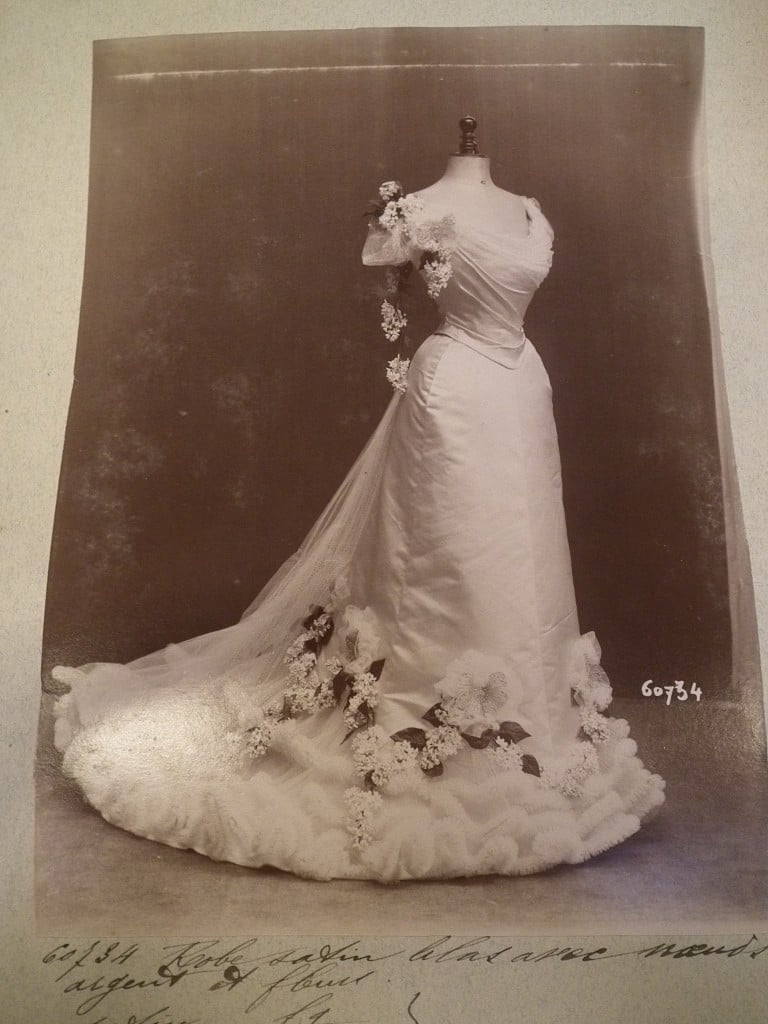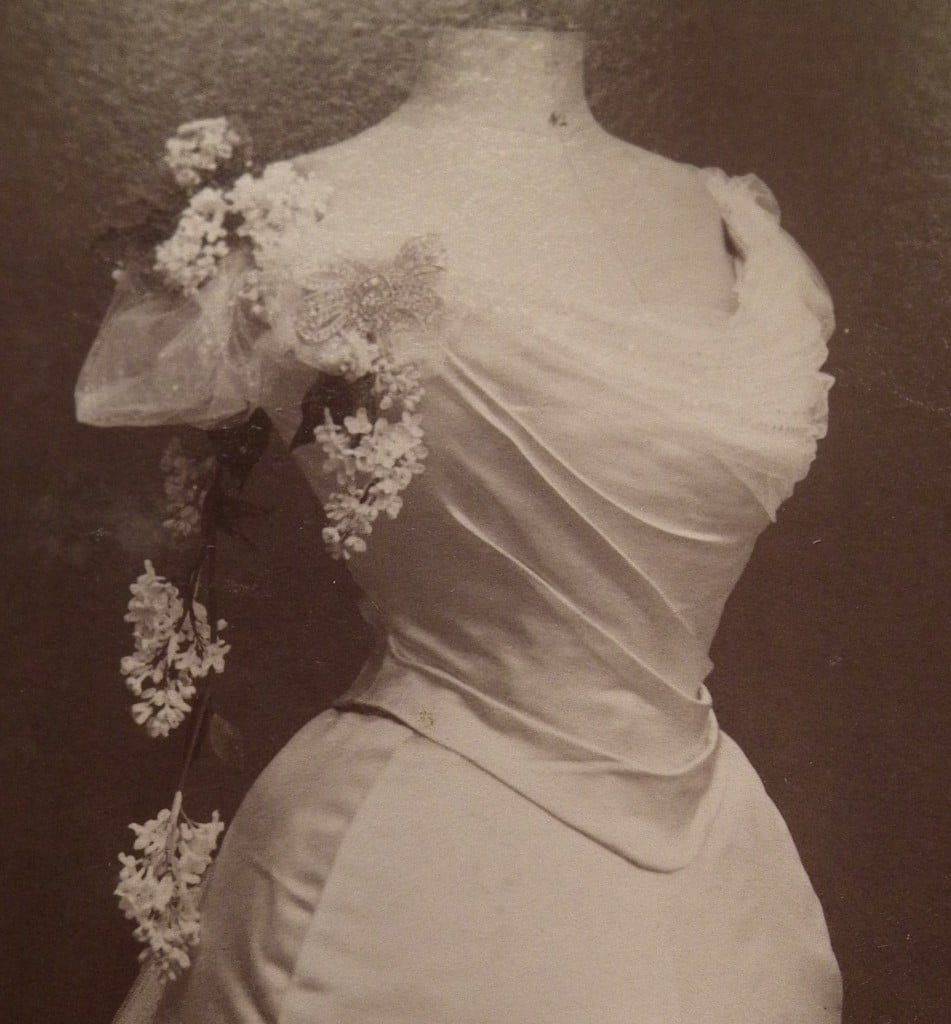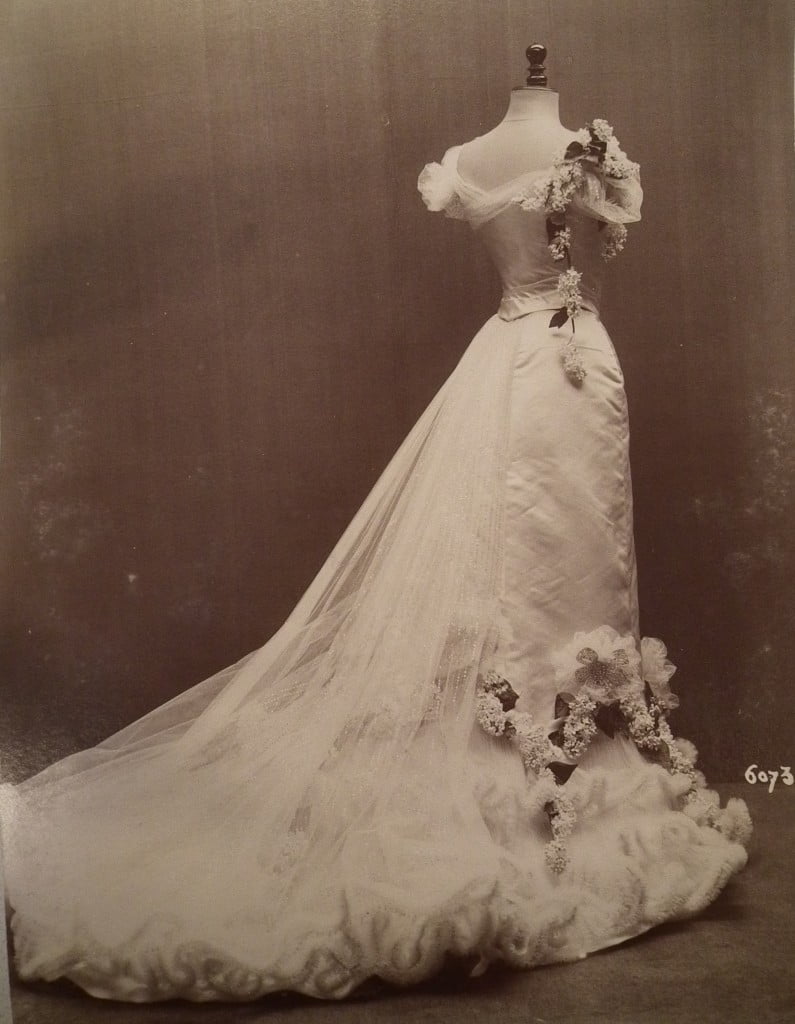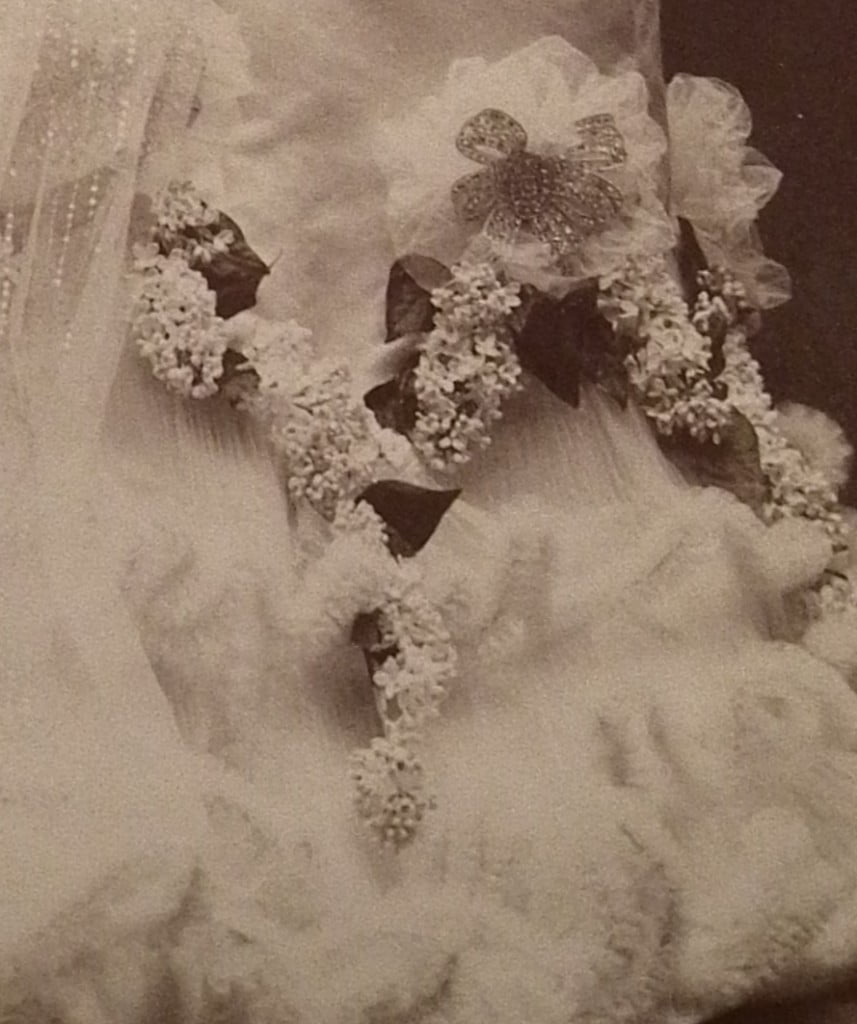Okay, okay, I’ll share! Here’s the first of the *other* gowns in the Worth photo album. (The album I looked at, anyway. There were at least a couple more huge tomes, just for that year.)
I planned to do one of those viral list posts you see all over social media – “20 Worth gowns you’ve never seen before – OMG I nearly died when I saw #12” – but honestly, each one of these gowns is worth (ha) a good long look and a few huge detail shots, as well as a front and back.
So without further ado, here is evening gown number 60734, a picture of simplicity (for 1902)…
Gorgeous. The description reads, “Robe satin blas avec noeuds argents et fleurs”, or “Lilac satin gown with silver knots and flowers.”
Let’s take a closer look at the bodice.
I LOVE the shape of these gowns, and since I made the Oak Leaf dress in 2009 I now know that this was not only achieved with the lacing of the corset, but by padding the bust and hips too. The draping of the satin over a tightly fitted lining is to die for.
Looking even closer…
There’s one of the “silver knots”. Find a few similar silver/diamante brooches, and some silk lilacs, and you’d be good to go with this project.
But of course, if a costumer was going to make this, they’d need to see the back…
If the front was gorgeous, the back is breathtaking. Worth documented front and back shots of every gown, which makes me very, very happy. With a front and a back, these gowns become very, very make-able.
Let’s take a closer look at the back of the bodice.
It looks as though this works much as the Oak Leaf dress did before alteration – a tight inner layer was fastened at the center back, and then the satin layer crossed over it and fastened at the left side. I think I can even see two vertical bones down the centre back, which would have stabilised the laced underbodice.
A frivolous cloud of tulle frames the shoulders. At least, that’s what I imagine Worth would have said. Charles Frederick was known for being an almost comically pretentious figure (hey, it worked for him – society lapped up every word and made him the king of fashion), and it’s said that his son, who’d succeeded him by now, followed in his footsteps.
There’s more frivolity at the hem.
At floor level, an equally frivolous profusion of frou frou circles the feet. It looks as though the hem is trimmed with fur, but I think it’s actually a heavily pleated tulle frill, which would be similar to the hem of the Oak Leaf dress, whose silk chiffon frill is trimmed with another ruched strip of silk chiffon. More silver knots and flowers, and a nice bit of contrasting foliage. I wonder whether Worth got his fabric floristry from milliners’ suppliers too?
And what’s that on the left of that image?
That lovely train of tulle is SPANGLY. How amazing would that have looked in the gaslit Diwan-i-Am at the Coronation Ball!
I wonder whether one of the other guests wore this design that night? It’s a Worth gown of the period, and there were reputed to have been 4000 guests in attendance. The odds are that *someone* wore it…









Such a party frock for a grown up! Where did this one fasten? Was it hooks and eyes down the left side?
Thanks for sharing! It’s…so…pretty!
Thanks for early Christmas! Can hardly wait for the next present!